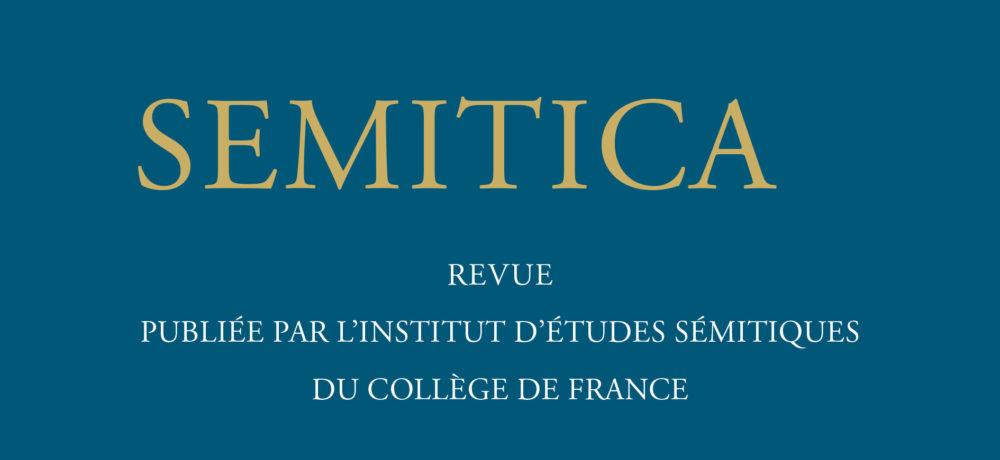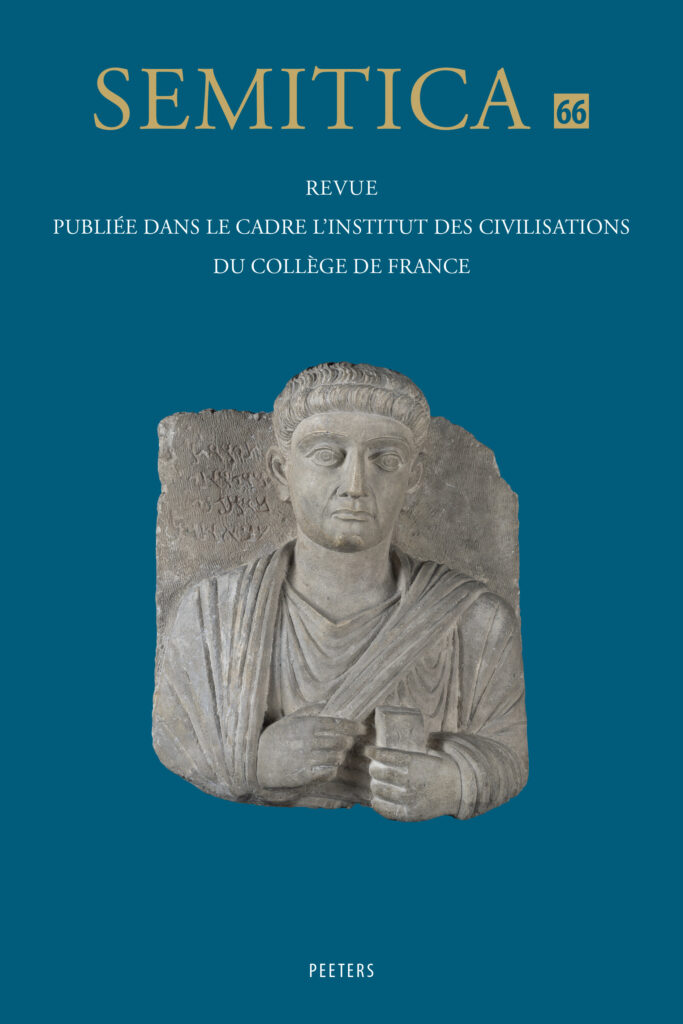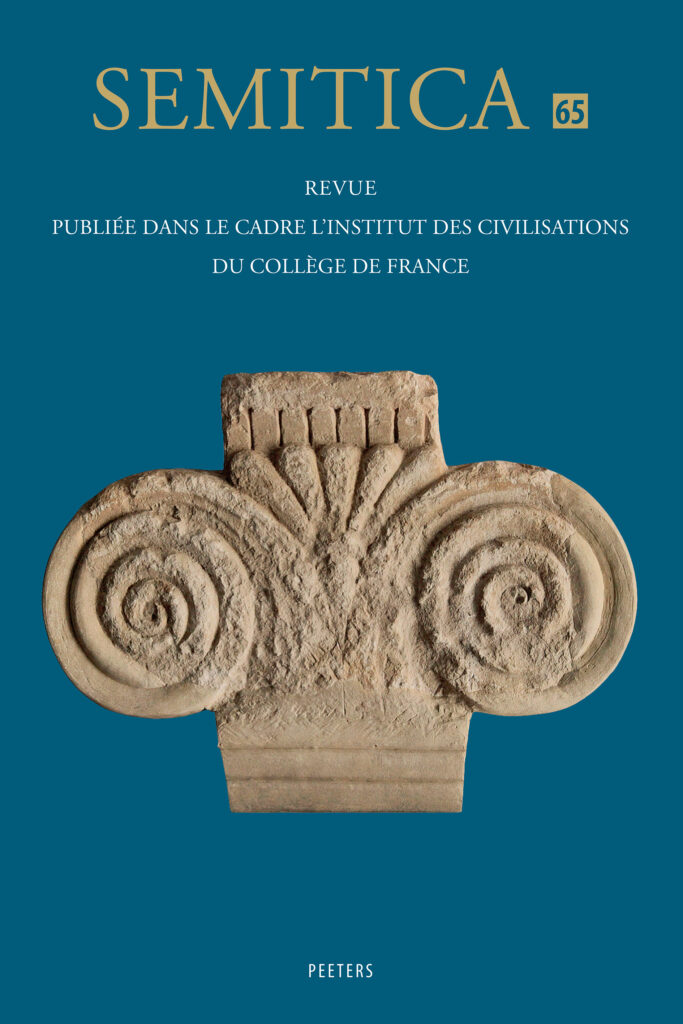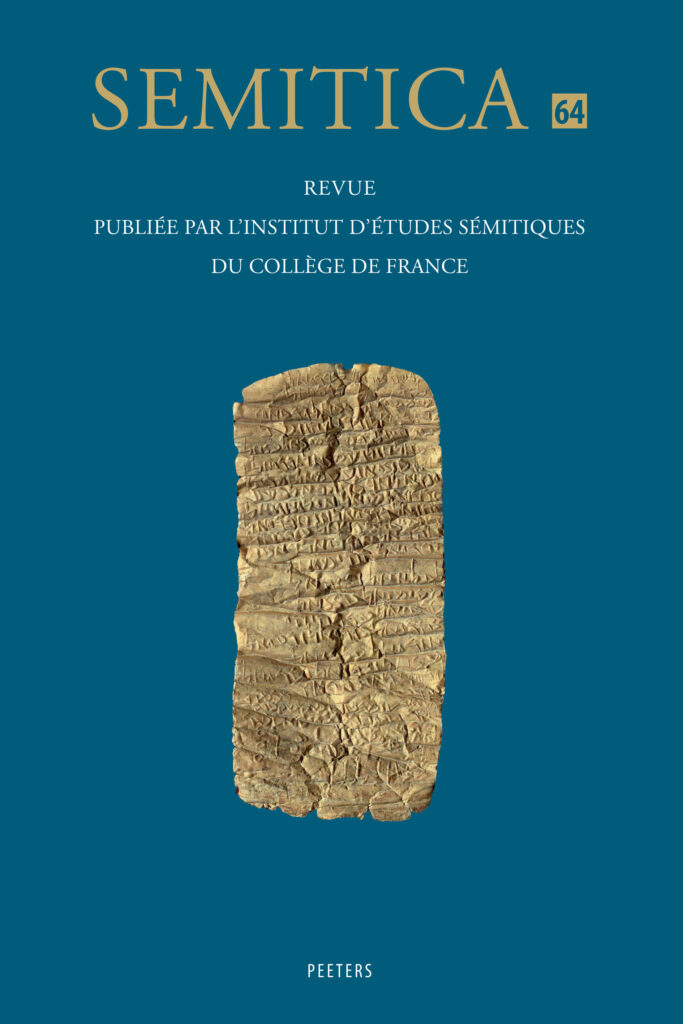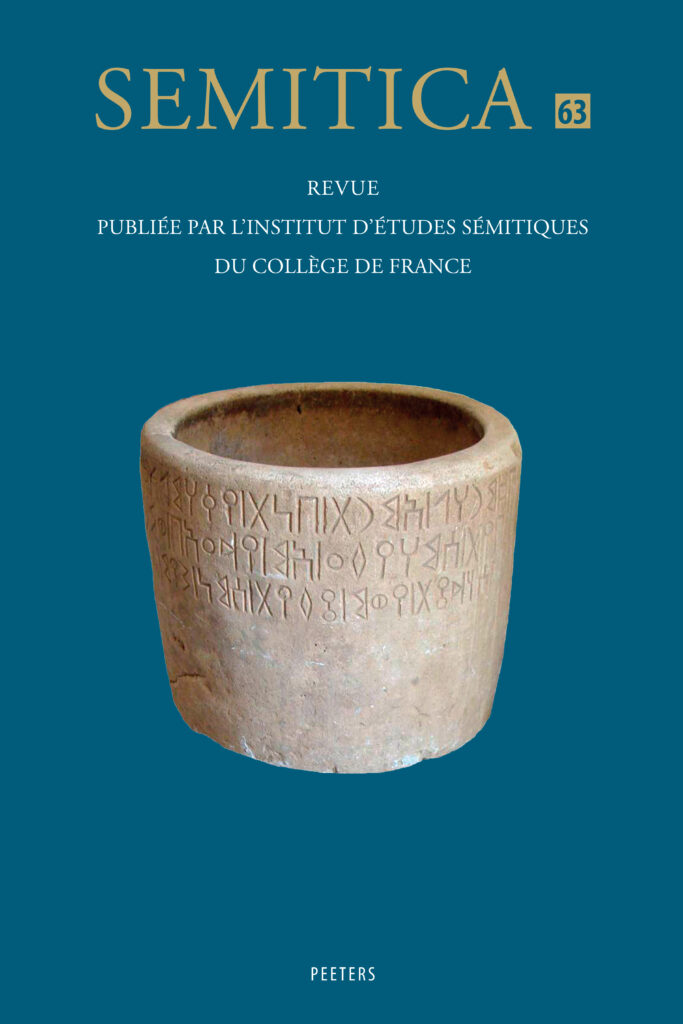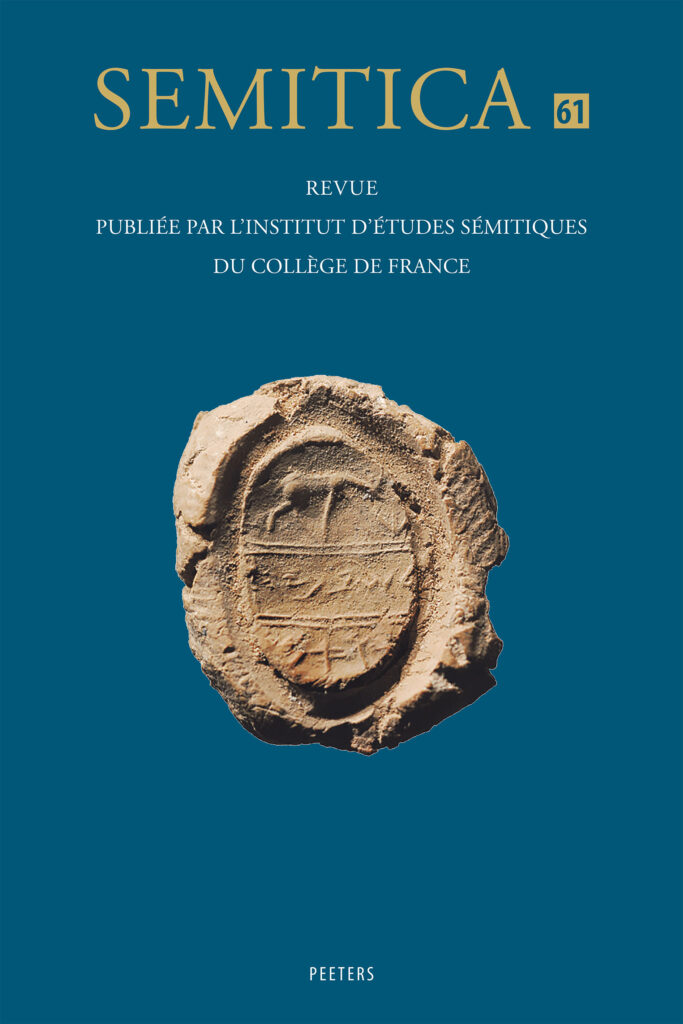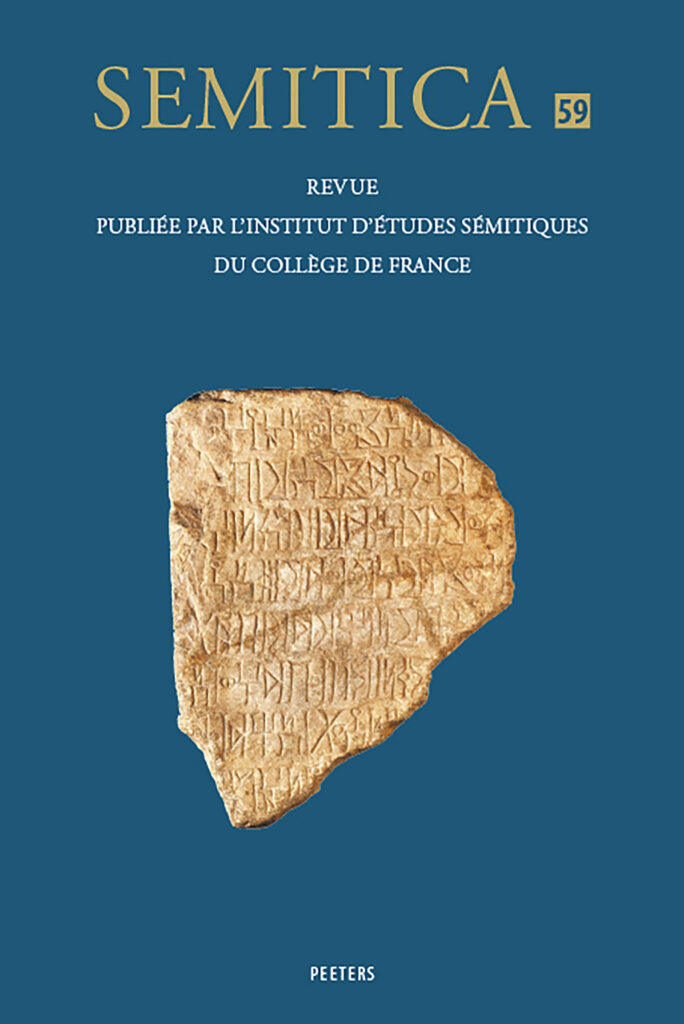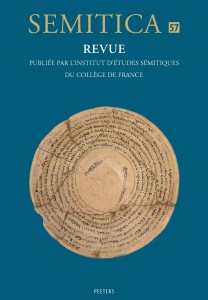Semitica 66, édité par Michael Langlois sous la direction de Thomas Römer. Leuven, Peeters, 2024. 321 p.
- Valérie Matoïan. Un nouveau « support à offrande » / thymiatère en bronze identifié parmi les découvertes de 1932 à Minet el-Beida (Syrie)
- Rita Suliman. Two Stamp Seals from Iron Age Tell Tweini
- Andrée Pedinielli et Gaby Abousamra. Une amulette gravée d’une inscription phénicienne
- Mounir Arbach. Inscriptions inédites de la région du Jawf (Yémen)
- Nadav Naʾaman. Alphabetic Writing in Jerusalem in the Early Monarchical Period
- Martijn Beukenhorst. The Quedlinburg Itala of Samuel – a missing link in understanding the Old Latin of Samuel–Kings?
- Sophie Ramond. Avigaïl : femme sage, prophétesse ou reine ? Une lecture de 1 Samuel 25
- Lindsey A. Davidson. A comparative lexical analysis of three Hebrew words for axe
- Innocent Himbaza. Psaume 91,4 : Lecture et relecture du ‘plumage’ et des ‘ailes’ de YHWH
- Matthias Hadi Benabdellah. Traduction et transformation des figures animalières du lion, de l’aurochs et de l’autruche dans le livre de Job
- Innocent Himbaza. Éditer les Psaumes dans une Bible hébraïque. Matérialité, disposition poétique et unités de sens dans le Psaume 82
- Isabella Maurizio. The second column of Origen’s Hexapla (Secunda): Points of contact with the Palestinian tradition of Hebrew and with Jerome’s transcriptions
- Ernesto Caveda de la Guardia. The Palmyrene funerary relief of the Museo de Bellas Artes de Bilbao: An epigraphic and prosopographic re-edition
